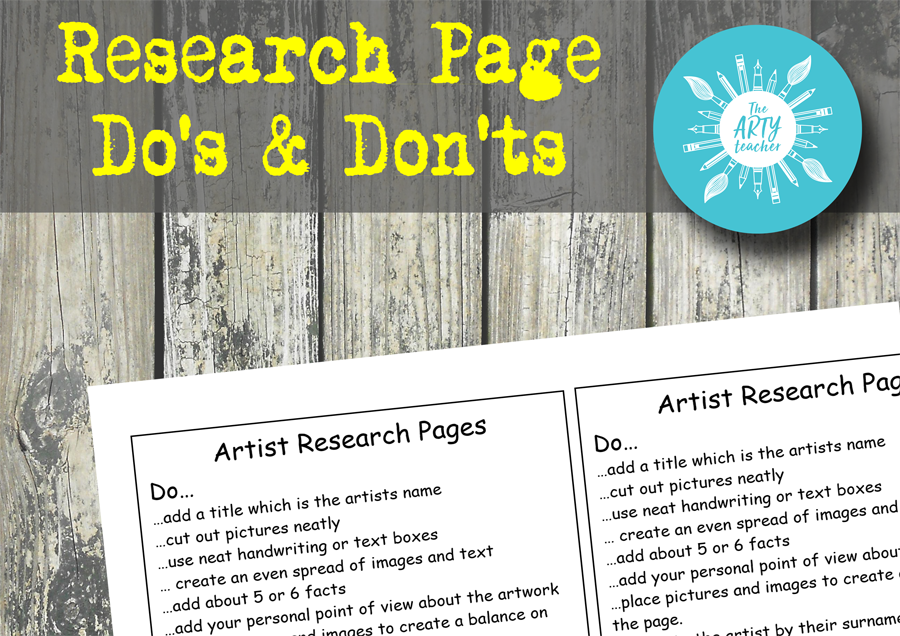
Giving Neurodiverse Students A Voice in The Arts
Giving neurodiverse students a voice in the arts should be part of what we do. The Arts are often safe spaces for students with specific learning disorders and mental health conditions to express themselves and shine outside of the academic pressures of the mainstream classroom. It is so important for us as Arts Educators to remain aware of this and purposefully hold space for these students as they move through our classes.
Here are 3 things to remember:
1) Be prepared to offer alternative modes of instruction and assessment.
A few years ago I was chatting to a Primary Art Specialist who was disappointed by the fact that some of her best performing artists for her practical tasks were failing her written response worksheets. These students were young, and the student she was referring to clearly had major issues with literacy and conveying his thoughts on paper.
Response tasks like reflections, evaluations, analysis of artworks or research tasks can be submitted in more creative ways than just in written worksheets or essays. Verbal interview responses can be recorded for Primary students, or they could access voice-to-text technology to get their ideas on paper. High school students enjoy creating podcasts, informative videos or vlogs, and can sometimes even convey a lot of their information pictorially via zines, magazine-type articles or posters. We want to foster creativity wherever we can! Why not allow that creativity to inform alternate modes of assessment?
2) Familiarise yourself with Learning Disorders, Mental Health Conditions & Neurological/Developmental Disorders.
If you feel as though you weren’t taught explicitly enough about neurodiversity in your studies, or if you’ve forgotten what all these terms mean, then I would encourage yourself to seek out some professional development in these areas. It is important that Educators not only are familiar with what these disorders look like in the classroom but how best to support these students. Sadly a lot of students who are struggling with these conditions and disorders are met with busy teachers who incorrectly label them as lazy, disconnected, disorganised or unreliable. These students need our support and understanding. Sometimes they will need explicit guidance on how to organise their files of work, have instructions broken down into smaller chunks, or extra time to complete written tasks.
3) Expose your students to neurodiverse artists.
There are many organisations across the globe that gather neurodiverse individuals working within the Arts. Speaking from my Australian context, it was so brilliant to see artists from Studio A in Sydney (a supported studio space for artists living with intellectual disabilities) creating a mural as part of the annual Archibald Prize at the Art Gallery of NSW in 2020. A quick google search will connect you with information about your local area.
From a historical perspective, it’s important also that we don’t shy away from discussing the physical and mental difficulties many famous artists had, from Goya, to Van Gogh, to Chuck Close.
Neurodiversity and acceptance of people with physical, intellectual or mental conditions is such an important part of our contemporary society. We will most certainly come across children dealing with such difficulties within our classrooms across our career. It is our duty as Educators – especially as Art Educators – to welcome these students, support them to achieve alongside their peers, have a chance to showcase their voice and work, and learn vital skills like creativity, problem-solving, persistence and personal expression that will assist them for the rest of their lives.
There is more information about learning disabilities and a useful list of signs and symptoms to look out for here from helpguide.org.
‘Giving Neurodiverse Students A Voice in The Arts’ is one of the many pedagogical blog posts on The Arty Teacher website.




Hey! I’m bookmarking this post for those times when I need a boost of inspiration. Your blog is a treasure trove of positivity.
Hi Nidhi, That’s such a lovely thing to say! Thank you 🙂
Empowering neurodiverse students to express themselves through art is truly inspiring. Your blog emphasizes the significance of providing a platform for their unique perspectives and talents. Thank you for promoting creativity and inclusivity in education!
Hi Darrell, Thanks for your comment. I do always aim to be inclusive in everyway. Thank you.
This is great to see! My own son was diagnosed with ASD when he was 12 and spent a few years prior to that in complete bewilderment to what was going on. He’s a straight A student but driven by high anxiety and perfectionism. In my artKids art studio, we attract a lot of kids on the Spectrum and with ADHD. We offer different ways for all students to participate in art making and support a fun, no-pressure environment. One of the best resources I have come across in this area is another Australian, Sue Larkey (see http://www.suelarkey.com.au) I originally attended her seminar as a parent but quickly saw the wealth of resources for teachers and teacher assistants in the classroom. She has lots and lots of free webinars. I recently sent my whole teaching team and all assistants on her online courses while we were in lockdown. Each one of them came away with immediate things they could change in the classroom. Well worth a look for teachers struggling to understand the way these kids process the world – and the number of children presenting on the Spectrum is only increasing as we learn more about it. It is not ‘bad’ behaviour, just misunderstood/miscommunication 🙂
Thank you for this feedback. The Sue Larkey website look excellent and full of information. Thank you.
I really enjoyed reading this post, it is so good to gain additional information on how to engage with and evidence the learning of neuro diverse students.
Thank you.
Thanks Beth. I’m glad you enjoyed this post and yes, it’s good to gather more information.